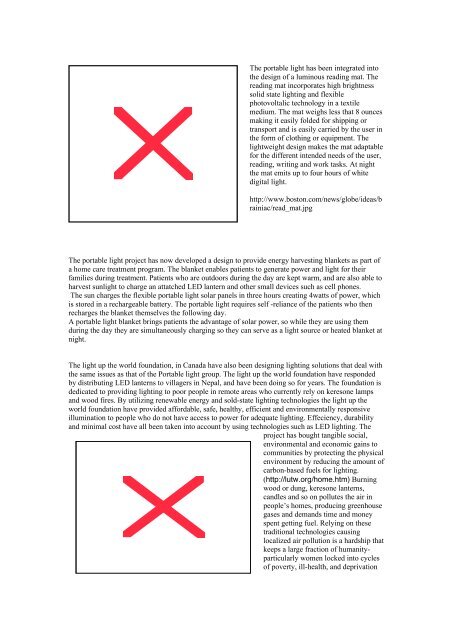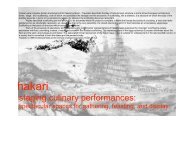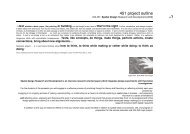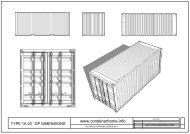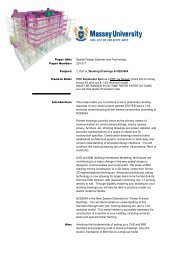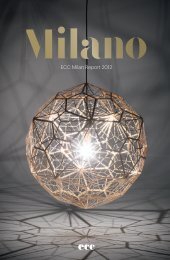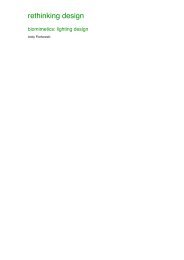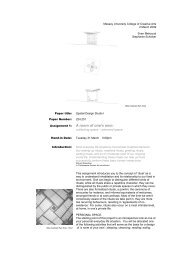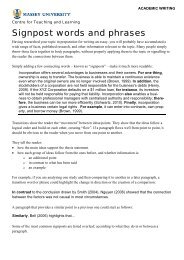rethinking design - Spatial Design@Massey
rethinking design - Spatial Design@Massey
rethinking design - Spatial Design@Massey
You also want an ePaper? Increase the reach of your titles
YUMPU automatically turns print PDFs into web optimized ePapers that Google loves.
The portable light has been integrated into<br />
the <strong>design</strong> of a luminous reading mat. The<br />
reading mat incorporates high brightness<br />
solid state lighting and flexible<br />
photovoltalic technology in a textile<br />
medium. The mat weighs less that 8 ounces<br />
making it easily folded for shipping or<br />
transport and is easily carried by the user in<br />
the form of clothing or equipment. The<br />
lightweight <strong>design</strong> makes the mat adaptable<br />
for the different intended needs of the user,<br />
reading, writing and work tasks. At night<br />
the mat emits up to four hours of white<br />
digital light.<br />
http://www.boston.com/news/globe/ideas/b<br />
rainiac/read_mat.jpg<br />
The portable light project has now developed a <strong>design</strong> to provide energy harvesting blankets as part of<br />
a home care treatment program. The blanket enables patients to generate power and light for their<br />
families during treatment. Patients who are outdoors during the day are kept warm, and are also able to<br />
harvest sunlight to charge an attatched LED lantern and other small devices such as cell phones.<br />
The sun charges the flexible portable light solar panels in three hours creating 4watts of power, which<br />
is stored in a rechargeable battery. The portable light requires self -reliance of the patients who then<br />
recharges the blanket themselves the following day.<br />
A portable light blanket brings patients the advantage of solar power, so while they are using them<br />
during the day they are simultaneously charging so they can serve as a light source or heated blanket at<br />
night.<br />
The light up the world foundation, in Canada have also been <strong>design</strong>ing lighting solutions that deal with<br />
the same issues as that of the Portable light group. The light up the world foundation have responded<br />
by distributing LED lanterns to villagers in Nepal, and have been doing so for years. The foundation is<br />
dedicated to providing lighting to poor people in remote areas who currently rely on keresone lamps<br />
and wood fires. By utilizing renewable energy and sold-state lighting technologies the light up the<br />
world foundation have provided affordable, safe, healthy, efficient and environmentally responsive<br />
illumination to people who do not have access to power for adequate lighting. Effeciency, durability<br />
and minimal cost have all been taken into account by using technologies such as LED lighting. The<br />
project has bought tangible social,<br />
environmental and economic gains to<br />
communities by protecting the physical<br />
environment by reducing the amount of<br />
carbon-based fuels for lighting.<br />
(http://lutw.org/home.htm) Burning<br />
wood or dung, keresone lanterns,<br />
candles and so on pollutes the air in<br />
people’s homes, producing greenhouse<br />
gases and demands time and money<br />
spent getting fuel. Relying on these<br />
traditional technologies causing<br />
localized air pollution is a hardship that<br />
keeps a large fraction of humanityparticularly<br />
women locked into cycles<br />
of poverty, ill-health, and deprivation


